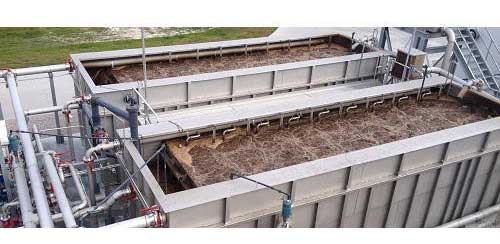
1. going SAVINGS
2. exclude wastewater surcharges
3. Reduce sludge running and disposal costs
4. Low sludge yield
5. Save on chemical costs
6. Reduce nutrient conditions
7. Exclude polymer operation
8. Reuse water in factory operations
Produces a veritably high- quality effluentOperates at high mixed liquor suspended solids attention(,000 –,000 mg/ l).
Long solids retention time.
Increased stability against changes in influent characteristics.
Membrane hedge ensures complete solids retention and process stability.
Eliminates issues with graveness explanation.
High hydraulic and organic peak capabilities.
Suitable for water exercise, improves factory’s water security.
Suitable for direct discharge.
Small footmark.
Panse Consultants is a renowned name in the industry of Membrane bioreactor technology manufacturers and suppliers in Pune, Maharashtra. The company has been offering its expertise in the field for several years and has gained a reputation for providing high-quality services and products to its clients.
Panse consutants provides Membrane bioreactor technology( MBR) a combination of the actuated sludge process with micro- and ultrafiltration is extensively regarded as an effective tool for artificial water treatment and water exercise due to its high product water quality and low footmark. Due to their robustness and inflexibility submerged MBR systems are more and more favored. This paper highlights two case studies for artificial operation in a marketable laundry and in a cloth plant. A large- scale intertwined water exercise process grounded on MBR RO technology( capacity 200 m3/ d) has been designed and established in a German laundry within an EC funded design ultimately performing in a exercise rate of around 80 of the total wastewater.
The process was in full operation at the morning of 2007 and has been operated economically since that time without any failure. Within another EC funded design a small- scale MBR( capacity up to0.4 m3/ d) has been successfully tested in a Chinese cloth plant. Despite high attention of low biodegradable chemical in the wastewater, the COD junking rate achieved around 90. still, the MBR percolate quality wasn't as high as in the laundry due to remaining multicolored dye what makes an fresh treatment step similar as nanofiltration or rear osmosis necessary in order to increase the proportion of reused water. In order to ameliorate rejection of low molecular weight organics Karlsruhe University of Applied lores and the Institute of Membrane Technology have started a new EC funded design within a institute of 11 mates in aggregate which aims at developing new membrane accoutrements furnishing a base for the development of a NF MBR reactor.